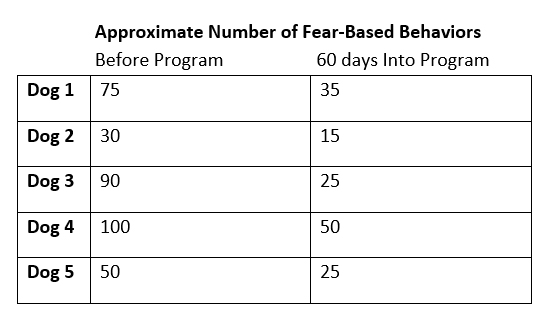
April 30, 2020
Audience: Executive Leadership
Organization: Protect Them All (formerly Hound Sanctuary)
Investigator(s): Rain Jordan
Grant Amount: $35,000.00
Project Type: Phase 2
Project Status: Research Complete
Project Summary
This Protect Them All study aimed to help fearful dogs by teaching staff and volunteers basics of behavior modification through The Fearful Dogs Project's program, with the goal of reducing behaviors that indicate fear in dogs. While the study aimed to include 20 to 30 dogs the sample was limited to 6 dogs due to various challenges. One of the dogs was adopted immediately, leaving 5 dogs in the study. For each of the five dogs, fearful behaviors decreased within 60 days of program participation. Before the program, each dog's most frequent behavior was 'look away', and each dog showed reduction in that behavior after the program.
Objective(s)
The objective of the project was: to evaluate the effectiveness of the Fearful Dog Project's behavior modification methods to reduce fear in dogs and help improve lifesaving outcomes.
Methods
Six volunteers completed the Fearful Dogs Project program, and the five participating foster dogs underwent a basic fearful dog treatment program. Special instructions were given to foster caretakers to provide dogs with safe and safe-feeling situations including relative quiet, privacy, caution, avoidance of activities that trigger fear-based behaviors.
Methods taught to each foster caretaker included classical conditioning to avoid creating negative associations, classical counterconditioning to replace negative associations with positive associations and operant conditioning in the form of positive reward training as needed for each dog and foster caretaker.
Fearful behaviors of every dog were evaluated at the start of the program and again approximately 60 days later. Behaviors were recorded and later scored by observers unknowing of whether the video was pre- or post- training. The behaviors coded and compared were paw lift, lip lick, escape, growl, bark, ears back, spin, look away, tail tuck, cower, pant, pace, sniff floor and tremble.
Results

Conclusions
Due to the small sample size, a research paper on the project was not written. However, the decrease in number of fear-based behaviors for every dog in the project demonstrates the program's efficacy for the dogs who participated.